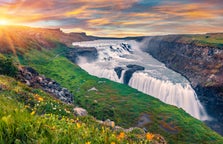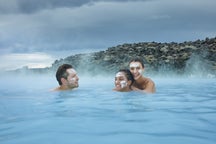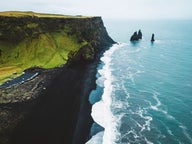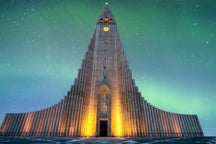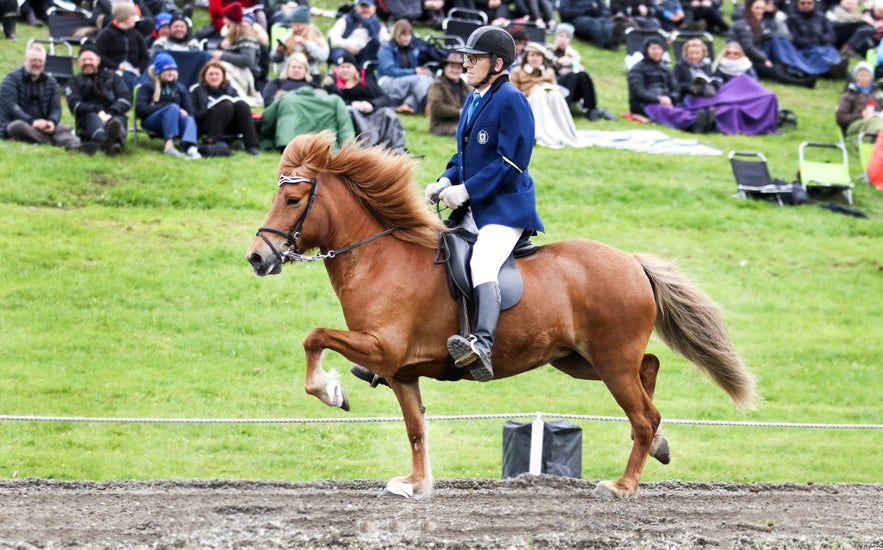
Horse riding in Iceland is a popular sport, and although it can be enjoyed all year round, the summer is definitely the best time to ride. The summer is also when one of the country’s biggest equestrian events is held, Landsmót or The National Icelandic Horse Competition, a bi-annual festival showcasing the country’s best horses and riders.
The festival had a little headstart as smaller events and competitions were held this past week at Víðidalur valley in the Árbær suburbs of Reykjavík city. The area is only a short bus ride away and with a Reykjavík City Card, you'll ride the bus for free!
Víðidalur valley has transformed into a whole village featuring a campsite, a children’s playground, and markets which sell everything from horse riding equipment to the Icelandic ‘lopapeysa’ sweater. There is also a food hall where you can try a wide variety of Icelandic delicacies and a stage for musical events performed by local artists.
Aside from the competitions themselves, the event is a family-friendly country festival where people can get to know both the Icelandic horse and the Icelandic culture.
- Find Horse Riding Tours here
Cover photo credit: Landsmót Hestamanna
History
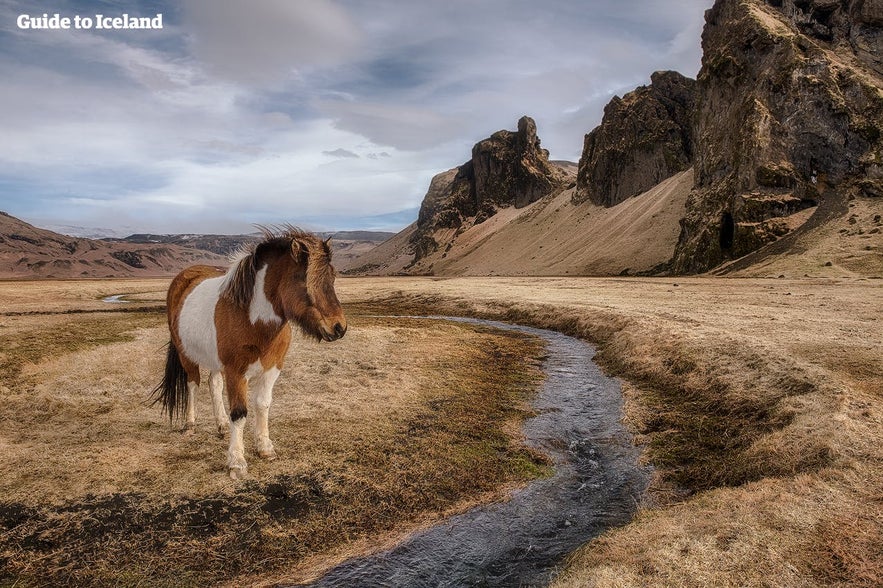
The Icelandic horse was first brought to the country by the Viking settlers around the year 900. Shortly after that, the Icelandic parliament, Alþingi, passed laws which prohibited the importation of other horse breeds, and so for over a thousand years, the Icelandic horse has been kept in complete isolation on this island. In fact, the rules are so strict that if an Icelandic horse is taken abroad, it can never return.
There is no denying that the Icelandic horse has been an intricate part of Icelandic culture and community for centuries. It was the nation’s best and surest way of transportation, even after the arrival of the automobile in 1913.
However, once the automobile became more popular, the streets of Iceland became unsafe for riders, and so to create a safe space, as well as a platform for equestrians to get together, a few rider’s clubs were formed throughout the country.
The first National Icelandic Horse Competition, or Landsmót, was a nation-wide gathering of these rider’s clubs where they’d show off their best stallions and breeding mares and compete for a ‘best in show’ price called Sleipnisbikarinn, or 'Sleipnir's Cup', named after Odin’s 8-legged horse.
The event was held in 1950 at the country’s most sacred place, Þingvellir National Park, the same place where Alþingi established the horse importation laws roughly a thousand years before.
The competition has since grown into a week-long festival with musical events and tournaments for children.
- Þingvellir is one part of the Golden Circle route, find tours here.
Today
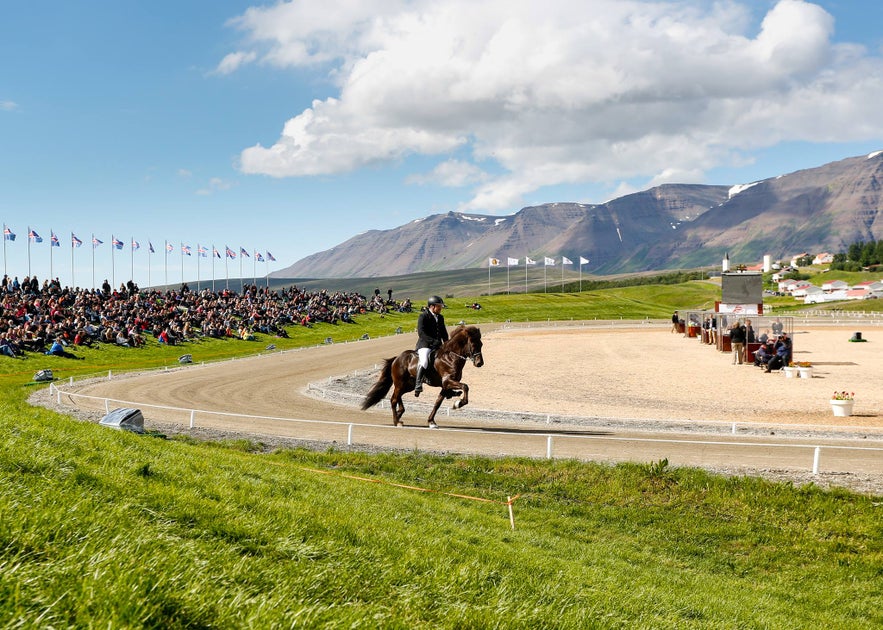 Photo credit: Landsmót Hestamanna
Photo credit: Landsmót Hestamanna
The main event of Landsmót is the All Icelandic Horse Riding Competition, also known as “Gæðingakeppni”. Here, riders of all ages compete with their horses in events designed to show all five gaits of the Icelandic horse; the tölt, trot, walk, gallop, and flying pace.
Yes, FIVE gaits because unlike other horse breeds, the Icelandic horse also has ‘tölt’ and ‘skeið’ or ‘flying pace’. The latter is a rhythmic gallop with a moment of suspension between footfalls, as each side of the horse’s feet moves simultaneously.
The tölt, however, is perhaps the favourite gait of riders of the Icelandic horse. This four-beat lateral ambling gait merges both speed and comfort, and the Tölt Competition is usually considered to be the highlight of the Landsmót.
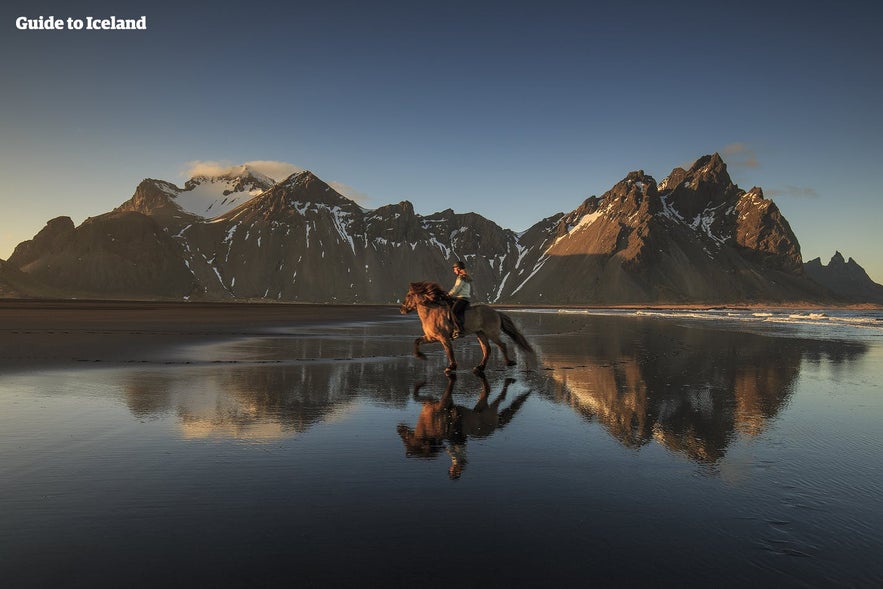
What sets this competition aside from other horse sporting games is that the focus is not on the rider but the horse itself. The competition form is more free and open, and less emphasis is on the rider’s precise riding, rhythm and speed and more on the horse’s spirit, power and extension in the gaits.
The competitions are, therefore, an excellent opportunity to show off a horse’s lineage, and alongside the matches, there are judged exhibition of breeding horses where the best stallions and mares are shown and rated.
So if you are interested in Icelandic horses, why not head to the Árbær suburb of Reykjavík and see the best horses this country has to offer? You can find tickets here.









